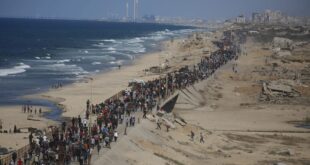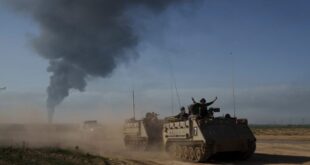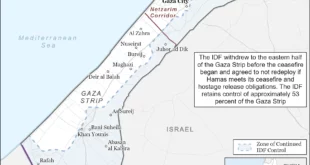BAGHDAD (AP) — About 1,500 people died violently last month in Baghdad — many shot execution-style by sectarian death squads, Iraqi officials said.
In other developments, three US soldiers were killed in a Sunni insurgent area on Wednesday, a US statement said.
They were assigned a brigade that operates around Ramadi, the capital of Anbar province, where support for the Sunni insurgency is strong. The deaths brought to at least 17 the number of American service members killed in Iraq this month.
Also, divers were searching for two Americans missing after a US military helicopter went down Tuesday in an unspecified body of water in Anbar province. The crash was not due to hostile fire, the US said.
Deputy Health Minister Dr Sabah Husseini said Wednesday that about 1,500 violent deaths were reported last month in the Baghdad area — excluding members of the US-led coalition.
The assistant manager of the Baghdad morgue, Dr Abdul Razzaq Obeidi, said 1,815 bodies were brought in last month, and about 85 per cent had died violently. The biggest cause of violent deaths was gunshot wounds, mostly in the head, he told the Associated Press.
Head shots are generally associated with death squads that roam the capital seeking victims from the rival Muslim sect. Violence between Shiite and Sunni extremists has been surging since the February 22 bombing of a Shiite shrine in Samarra.
Four people were killed and five wounded when fighting broke out late Wednesday between gunmen and residents of a Shiite community in north Baghdad, police Lt. Salim Ali said. Sporadic clashes were continuing, he said.
Four people were killed and 16 wounded in an explosion late Tuesday at a Shiite mosque in Baqouba, a religiously mixed city 55 kilometres northeast of Baghdad.
Several nearby buildings were damaged.
In a statement Wednesday, the Shiite Endowment, which takes care of Shiite shrines in Iraq, blamed “terrorists†for the blast and demanded that government forces protect places of worship in the area — scene of numerous car bombings, kidnappings and armed attacks by Sunnis and Shiites.
The rise in sectarian violence has dashed US hopes that installation of the national unity government would set the stage for a significant drawdown in the 127,000-member US military force here.
Instead, the US military is rushing 12,000 American and Iraqi soldiers to Baghdad to regain control of the streets from Sunni insurgents, Shiite groups, criminals and freelance gunmen.
US officials have refused to say how many reinforcements have arrived in the capital, although some of them have been seen patrolling a tense Sunni neighbourhood in west Baghdad.
US Maj. Gen. William Caldwell told reporters Wednesday that the buildup would take place gradually and the new operation needs the cooperation of the Iraqi public to succeed.
“They have to be involved. The Iraqi people have to want this to work. If they are not involved… then there is no solution,†Caldwell said.
His appeal reflects the private frustration of some US officials that Iraqis are reluctant to provide information on gunmen hiding in their neighbourhoods.
More significantly, many of the sectarian groups responsible for the violence are linked to political parties that are part of Prime Minister Nuri Maliki’s government, which took office May 20.
Some US officials have said Iraqi commanders themselves are frustrated over what they consider a lack of support from politicians.
Maliki, a Shiite, strongly criticised a US-Iraqi raid Monday on a Shiite neighbourhood in which three people were killed. The raid was directed at the stronghold of the Mehdi Army of radical cleric Moqtada Sadr, an ally of the prime minister.
Caldwell defended the operation, saying US and Iraqi forces tried to avoid civilian casualties and escalated the use of force only after drawing heavy fire from gunmen.
Caldwell said “these death squads, the anti-Iraqi elements†were hiding “within the civilian population†to make it difficult “to get to them without inflicting casualties on civilians.â€
“They know exactly what they’re doing by where they’re placing themselves,†he said.
 Eurasia Press & News
Eurasia Press & News


